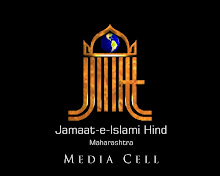Verdict on Babri Masjid extra-legal, exceeds mandate of SC: Mushawarat
Submitted by admin4 on 1 October 2010 - 3:29pm
Posted in Indian Muslim
By TCN News,
New Delhi: Syed Shahabuddin, President of All India Muslim Majlis-e-Mushawarat, has termed the Allahabad High Court verdict on the Babri Masjid as extra-legal based on myths and legends and not on evidence on record, and one that has exceeded the mandate of the Supreme Court.
“The AIMMM is surprised by the verdict on the title to the disputed site by the Allahabad High Court,” he said and placed the essential points before the people for information.
1. The Judgment is inextricably confusing because it is not a straight two-to-one judgment. There are in fact 3 judgments and they go on shifting their verdict on vital issues. Therefore essentially the judgment does not settle or resolve the issues.
2. The Judgment is extra-legal based on myths & legends, ‘faith’ & superstitions, and not on the evidence on record. It essentially highlights the argument of ‘faith’ which did not exist until recently and was manufactured with political motives some years before 1949 and subsequently played up by the Sangh Parivar since the 80’s.
3. The Judgment also ignores the fact that the Supreme Court Order of 1994 treated the disputed site as one entity and did not envisage any division and had laid down a road map for the Government in respect of the acquired land, once the title over the disputed land which said that either a Masjid or a Mandir would be built on the disputed site and the other shrine will be built within the disputed area at some distance from the first.
4. The Judgment allots the area under the central dome to Ram lala, recognizing it as a deity but does not take into the account the facts that Ram lala was first placed in the inner courtyard of the Masjid by human hands and later shifted to the ‘minbar’ under the ‘mehrab’ (the central dome). What is more important is that there is no evidence that the idol of Ram lala was ever sanctified through Pran Pratistha Puja which makes an idol a deity, or a legal person.
5. The Judgment repeats wrongly in several places that both Muslim & Hindu worshipped in the Babri Masjid. The records establish that the Muslims always and exclusively used the hall under the three domes and the adjoining inner courtyard for worship, and the Hindus worshiped Ram at the Ram Chabutra located in the outer courtyard, since late 19th Century.
6. The Judgment exceeds its authority as it goes beyond the 1994 directive of the Supreme Court for determining the title to the disputed site. Indeed, it does whether the Supreme Court had itself refused to do; declare whether it is Ram Janambhumi.
7. The Judgment also goes beyond the pleadings of the parties because no party asked for a division of the disputed site. In dividing it the Judgment does not take into account that fact that the Babri Masjid existed on the spot from 1528 and was built by Mir Baqui on the orders of Emperor Babar and that until 22 December 1949 Muslim prayed there with occasional breaks due to exceptional circumstances.
8. The Judgment is simply impracticable because with the total area of the Babri Masjid being only about 1200 square feet, distributed among 3, it will only mean a mini-Masjid & a mini-Mandir!, next to each other giving rise to constant friction
9. Even if the Babri Masjid was built after demolishing a standing Mandir, then the Judgment ignores the universal law of Adverse Possession which creates a right in favour of the Muslims while no right is created in favour of the Hindus by the ‘illegal and surreptitious’ introduction of Ram lala in the inner courtyard on 22-23 December 1949 because it was immediately challenged by the authorities. The Judgment ignored the vital affidavit of the DM, Faizabad, on this point, which binds the Government & the Judiciary.
Syed Shahabuddin said that the Muslim community is dissatisfied and shocked by the Judgment and is determined to exercise its right of appeal to the Supreme Court with a view to reverse the judicial stand from the mythological to the legal, from next say frame to verifiable evidence.
The Supreme Court is expected to admit the appeal by the Muslim Community and may direct that the status quo may be extended till the appeal is disposed of, he hoped.
“The Muslim community is ready to accept the final judicial verdict of the Supreme Court as it is committed to the Constitution and the rule of law. It does not see any scope for negotiations among the parties until the final judicial verdict establishes the rights and status of parties concerned,” said Shahabuddin who is an authority on the Ayodhya dispute, and has played key role in Babri Masjid movement.
http://twocircles.net/?q=2010oct01/verdict_babri_masjid_extralegal_exceeds_mandate_sc_mushawarat.html
Subscribe to:
Post Comments (Atom)

No comments:
Post a Comment